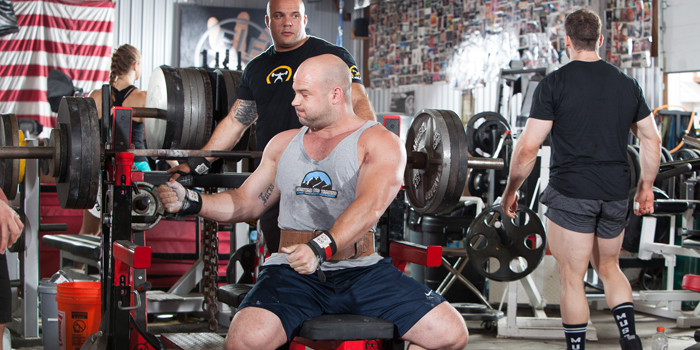
Welcome to my first article in my new series for the beginner powerlifter. Over the next few months, I will be providing you with how-to guides on programming, setting up a yearly plan, ways to set up each phase of training, guides for each of the main lifts along with accessory movements, and much more.
As a newer lifter, I understand things can be extremely overwhelming. But take a deep breath and enjoy this journey, as it’s life-long. It will be filled with ups and downs and many lessons to experience. Much of what you learn will have tremendous carry over into your everyday life.
RECENT: 3 Things You'll Find in My Mental Health Toolbox
The reason I’m starting this series is that I’m tired of seeing bad coaching and bad programming being sold to new lifters, only to leave the new lifters worse than when they started. I’m tired of seeing lifters who, while strong, aren’t capable of writing and coaching others, especially the coach who cares more about their ego than their lifters. While I can’t be mad, they are leveraging their experiences to make a living, and it bothers me people think just because someone is strong they are a good coach. I’m here to change that.
Here’s a terrible analogy: Bill Belichick wasn’t the greatest football player, but we all know his history. As a lifter seeking out a coach, you need to look at the full resume. This includes experience, whom they’ve learned from, what they’ve lifted, whom they’ve trained, and more. An 800-pound deadlift, while impressive, doesn’t make someone a good coach, and if you’re selling your services riding on the back of an elite total and nothing else, you’re part of the problem with the coaching industry. And no, I’m not comparing myself to the greatest football coach of all time.
Introduction
I’m not a fan of writing a 12-week program for beginners and having it published on this site. It does nothing for you, the reader, and is a disservice. The reason why is because it may only work for a few people, but for the rest, you won’t get the results you seek. Programming is an individualized process.
This article is meant to show the newer lifter how to set up their own program. This isn’t a substitute for having a good coach and training partners who can assess your technique, coach/cue you, and help you with your programming.
Yay, another conjugate article. Like beating a dead horse on this site, huh? Honestly, a lot of this information can be found within this website if you spend the time searching and reading. But in today’s day and age, ain’t nobody got time for that.
While watching the weekly AMA with Dave, Casey, Joe, and the rest of the team on Instagram, I see a lot of similar questions being asked by newer lifters about programming and implementing this system. I wanted to provide you, the reader, with a different perspective and give you a guide on how to write your own program utilizing this system.
While the programming is important, it's the execution of the program that will get you the results. There will never be one best program. We can fight about it until we are blue in the face, but give me a mediocre program with amazing execution, and I guarantee you’ll get results.
Who Am I?
I don’t have a world record. I don’t have an elite total. My best lifts don’t matter, but I have experience under the bar. What I do have that a lot of other “coaches” don’t is an elite education.
For the past 10 years, I’ve had the opportunity to learn from and train with some of the strongest and smartest lifters in the game. This list includes Dave Tate, Casey Williams, Brandon Smitley, Joe Sullivan, Julia Anto, Christian Anto, Nate Harvey, Lily Starobin, Zach Gallmann, Joe Schillero, Murph, Kirk Sabalka, Nick Showman, Josh Kincaid, JL Holdsworth, and many more. I’m also lucky and still dumbfounded that I have a column on this site, which has allowed me to have access to a network I am forever grateful for.
WATCH: Learn to Train X — Dave Tate Teaches the Max Effort Method
What I bring is platform experience, an eye for movement, a background in human physiology, and a love and passion for coaching not just field sports athletes but also powerlifters. As much as I love training, I love coaching and handling lifters even more. Seeing a lifter succeed on the platform means more to me than any PR I’ve ever hit.
“Who have I trained?” you may be asking. Well, none of my clients are putting up world record numbers, but they are putting up numbers they never thought were possible. My specialty is the beginner and intermediate raw lifter who, at the beginning of their powerlifting career, needs an amazing coach to set the standard and help lay a solid foundation for them by teaching them the fundamentals of training, from mastering the lifts, to understanding their bodies, and developing and understanding a well-thought-out program, and most importantly, creating an amazing experience and growing this sport.
Why Conjugate?
As you can see from the people I’ve learned from, this was the system I was taught from the start. I’ve seen it work not only for the lifters and athletes who trust me to coach them but also for many others and myself. I do feel when implemented properly, there is no other system that can come close. Realize I said, “system.” Not program. Re-read again. And again.
It’s a system, not a program. It can be tailored to suit whatever your goals are: powerlifting, athletics, CrossFit, marathon running... You name it, and this system can’t be beaten. I’ve spent years learning and implementing the conjugate system with athletes, the general population, and powerlifters with great success.
It’s a system I truly believe in. You need to be implementing and executing a system you believe in. If it’s not conjugate, then so be it, but just because you don’t believe in conjugate doesn’t mean it doesn’t work. I’m not here to argue or debate. So if you’re looking to troll or make comments, don’t waste your time.
The biggest things holding most of you back from increasing your total are one, technique; and two, your weaknesses. Seriously, focusing on those two things alone will increase your total. Stop overcomplicating the process. Keep it simple and execute at a high level. When you start to overthink things and question everything, you will stall your progress. I’m all for being curious and asking questions, but sometimes you really do need to shut your mouth and train.
Dave told me one of the ways they approached training at Westside was through a “do-first, ask-second” mentality. I think all of you should approach your training this way. I don’t remember if those were the exact words, but the way I interpreted it was if you question everything on why things do or don’t work, you may miss out on an opportunity to learn and get better.
That’s what’s great about the conjugate system. You can set it up so many different ways. If it works, great; figure out why. If it doesn’t work, figure out why. Either way, you will always be learning something and getting better.
What is the Conjugate System?
The conjugate system was first introduced me in the early stages of my coaching career through the books Supertraining by Verkoshansky and The Science and Practice of Strength Training by Zatsiorsky, then later through elitefts and Westside Barbell.
What Louie did at Westside was take the conjugate system and develop it into a method to be used by the powerlifters training at Westside Barbell. The development of this method brought worldwide attention to the conjugate system and changed, well, everything forever. I still don’t think Louie gets enough credit for what he did and continues to do. He’s so far ahead as far as getting athletes faster and stronger. He always has been and always will be.
RELATED: Your First Meet Cycle — How to Lay the Foundation
The word conjugate means “to join together.” You’re combining different methods to achieve your goals in a systematic approach, which is both efficient and effective, and it’s also been proven to work. The methods you will be using are the max effort method, the dynamic effort method, and the repetition effort method.
The conjugate system also has an emphasis on building a strong and solid foundation through GPP work. Seriously, who wouldn’t want to get bigger, faster, and stronger, and have the ability to recover quicker? If you don’t want any of those things, then stop here.
The options for how you set this system up are endless. You must first understand it. Before we get into the methods, we need to look at some charts to understand why these methods are so important to your success.
Force-Velocity Curve
I’ve written about this in previous articles, and it’s worth mentioning again. A lot of my programming is based on this curve.
First, this curve shows the inverse relationship between muscle force production and contractile velocity when muscle fibers are shortened. Where contraction velocity is high, muscle force is low; and where contraction velocity is low, muscle force is high. Heavy loads, slower speed. Lighter loads, faster speed. There’s nothing groundbreaking here.
As a powerlifter, you want to be powerful, which is why you need to train both speed and strength. The ability to generate maximum strength and the ability to produce high speeds are two different motor abilities. This is why lifting heavy all the time and focusing on pure strength alone will not necessarily enhance your speed, and training pure speed won’t necessarily enhance your strength. If you only train one part of the curve, it may lead to you only improving your performance in one ability while possibly decreasing in the other.
As a powerlifter, I can usually see where you fall along this line from watching you hit your lifts. If you’re a fast lifter, then I know I need to do more strength-speed and max strength work with you, as we want to pull you more toward the center and make you more powerful by pulling the curve to the right.
The same goes if you’re extremely strong; I will want you to spend your time doing more speed-strength and pure speed work. Doesn’t mean you won’t do strength work; it just means it won’t get as much attention as the other qualities until I feel we balanced the curve out.
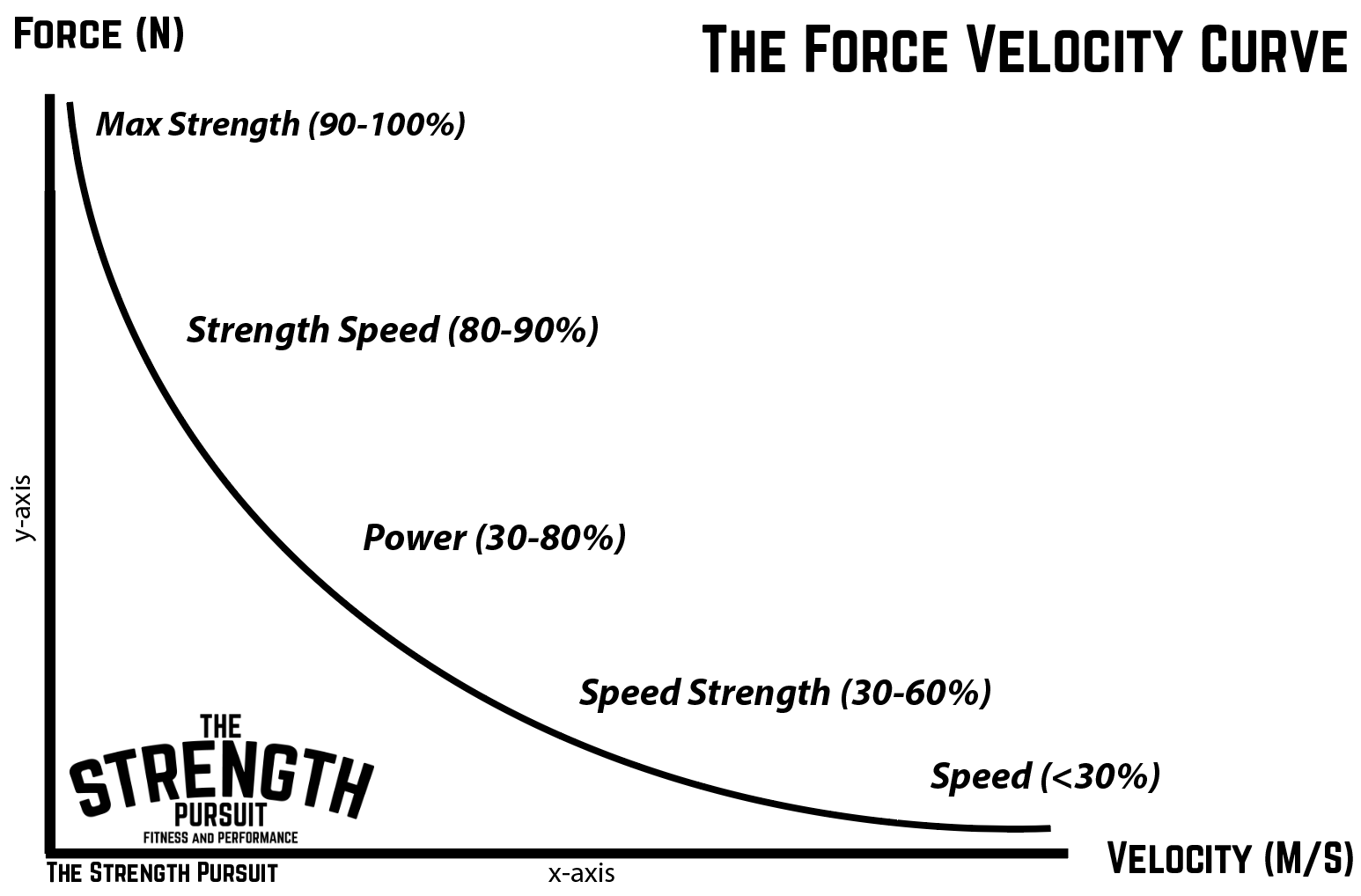
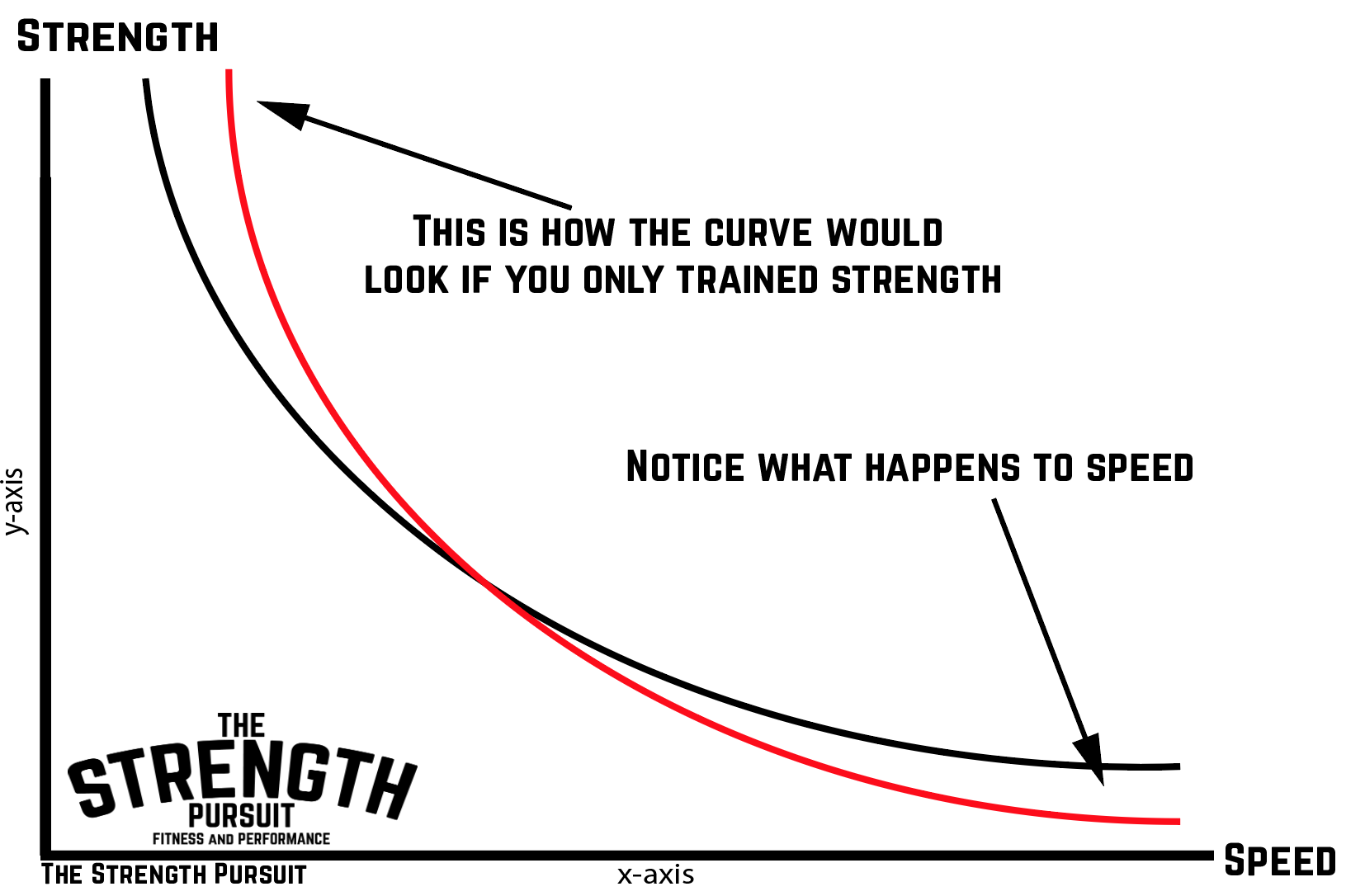
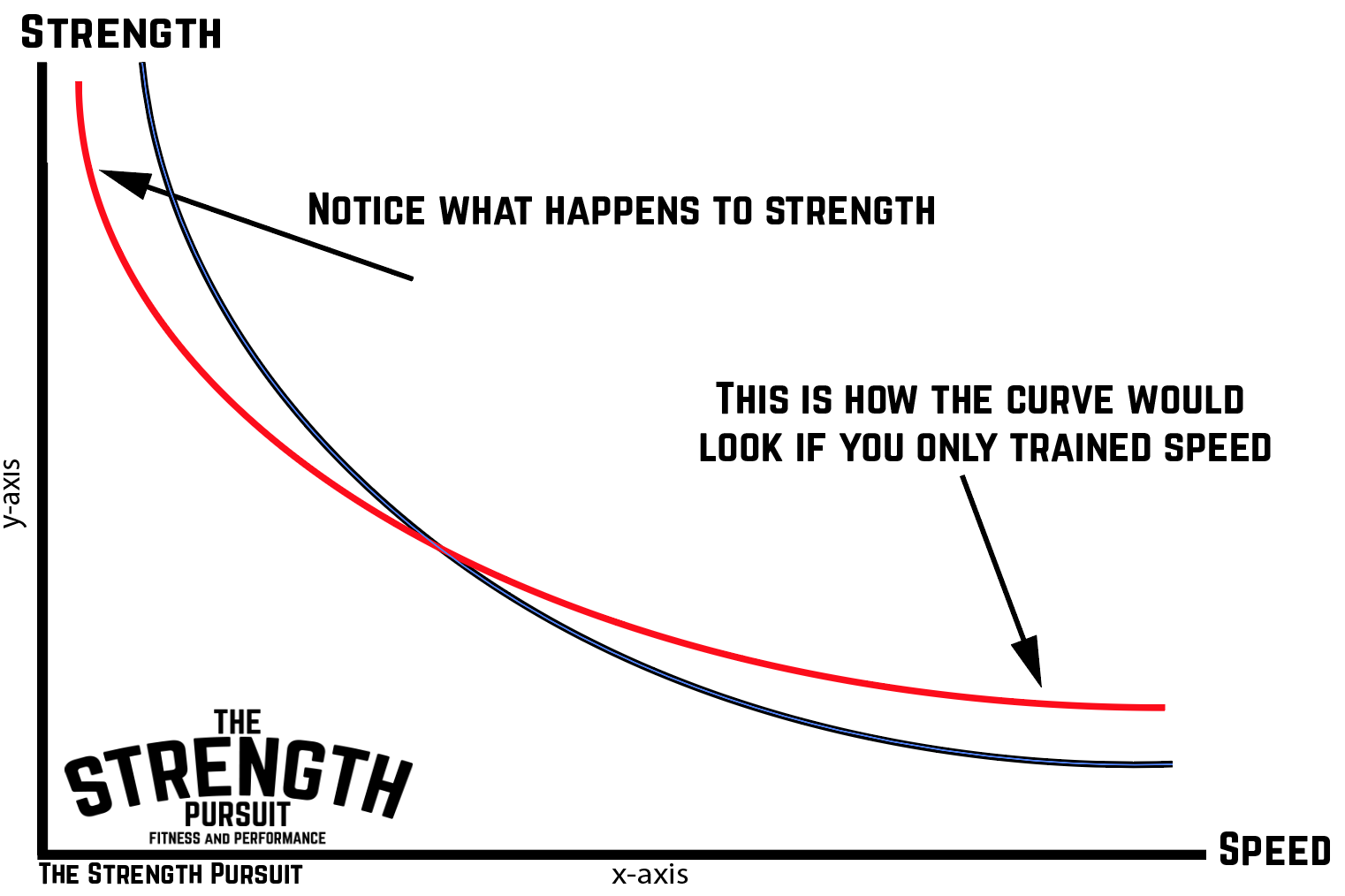
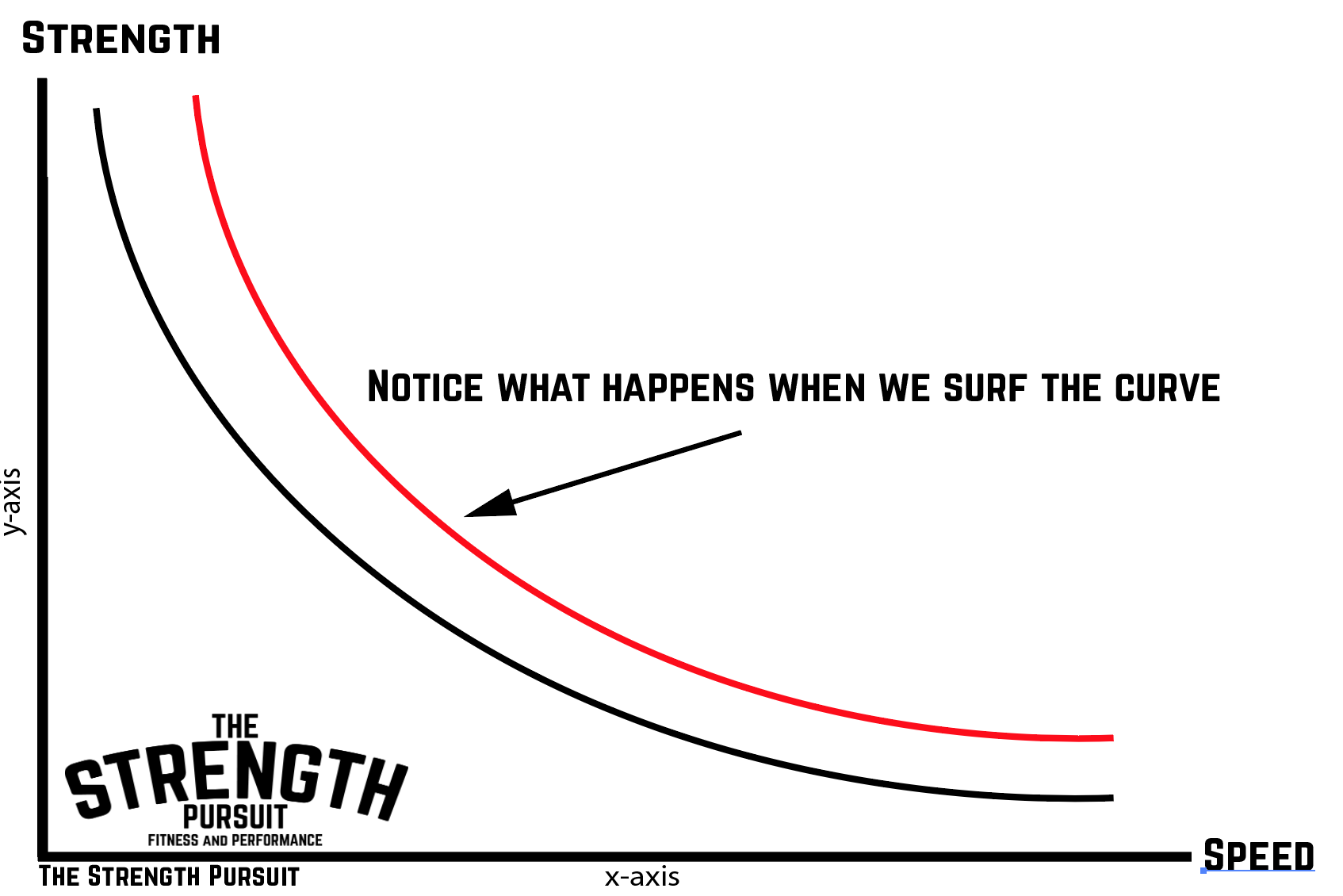
- Max Strength: The max strength zone is where you are able to produce the maximum amount of force through a specific movement. From a training standpoint, this is programmed at intensities greater than 90 percent and is on your max effort day.
- Strength-Speed: This is between max strength and power. It differs from max strength because you must produce optimal force in a shorter timeframe as opposed to max strength, thus reducing the maximum amount of force that can be produced. This is a good place to be to produce higher velocities with heavier weight. Training intensities are typically programmed at 80 percent to 90 percent.
- Power: This is where you can deliver peak power output. The exercises and intensities you use allow you to produce the greatest amount of force in the least amount of time. This is a good place to be for increasing the rate of force development. Training intensities are typically programmed 30 percent to 80 percent. Variations of the main lifts would be used here, but then you can start to use things like weighted jumps, throws, weighted sprints, etc.
- Speed-Strength: This is between max speed and power. Peak force is too low, as there is a greater restriction in the amount of time, but what it does mean is velocities will be higher. You will see this type of programming on dynamic effort days. Training intensities are typically programmed 30 percent to 60 percent.
- Max Speed: The goal here is max velocity. This is usually saved for my field sports athletes whom I need to move as fast as possible. Most of the time the movements in this zone are typically body weight with intensities being lower than 30 percent. Sprinting is my main focus when doing max speed work.
Prilepin’s Chart
This chart states how we can use various intensities (percentage of your 1RM) to stimulate certain physiological adaptations. This chart, when combined with the force-velocity curve, is an excellent resource when setting up set and rep schemes for your training program.
Use this chart as a guide, but understand it can change over time. Try the minimal amount, optimal, maximal, and volumes above those listed on the chart. Track these things to see which ones work best for you. It’s a template/guide, not gospel.
Let’s say we are going to follow the optimal range to keep things simple. Looking at the chart, you can see using the 80 to 90 percent range of your 1RM is what you would use to train for strength. If we are training for strength, we need an optimal number of reps, with 15 (range 10-20) being the suggested range. If I were to put it into a set and rep scheme for training, it would be 5x3 at 80 to 90 percent intensity. This would achieve 15 reps in the optimal set/rep/intensity range needed for strength.
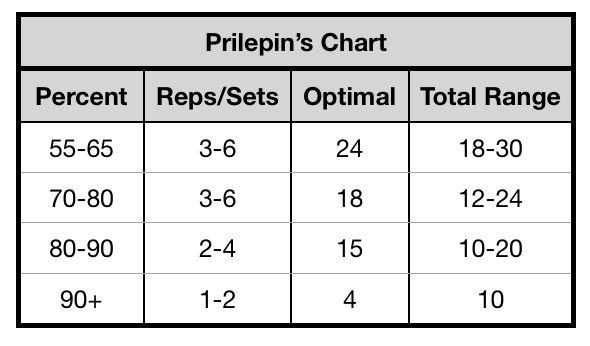
Phases
You need to have a clear focus for each phase of your training along with clear transitions between each. My phases for training are typically broken down into work capacity (GPP) and speed strength, hypertrophy and speed strength, speed strength and pure strength, strength-speed and pure strength. And of course, a meet prep phase if you’re competing.
You should move between these phases based on your needs, usually in eight- to twelve-week cycles. Your goal is to surf the force-velocity and keep moving said curve to the right, focusing on the entire curve over the long term. When I say long term, I mean five to ten years, not six months.
The Methods
Max Effort Method
This is your heavy training day. Your top sets will be 90 percent and above. For the most part, this will be a 1RM day. But you can use a rep range of one to three reps; however, this will depend on what phase you’re in.
This does not mean go for broke every week. You need to understand the goal of the phase you’re currently in and stick to it. I suggest no more than four reps over 90 percent; as you can see from Prilepin’s chart, this is what is optimal.
A good rule is no more than two PRs for the day. This is a standing rule for my training partners and me. No matter how the second PR felt, you shut it down. For those newer to conjugate, I would run the same max effort movement every week for three weeks. For the intermediate to advanced lifter, I would rotate my max effort movements.
Newer Lifter:
- Week 1: Floor Press — Work up to a training max
- Week 2: Floor Press — Hit 4 sets in the 90% range of the training max
- Week 3: Floor Press — True max
Intermediate Lifter:
- Week 1: Floor Press — Heavy triple
- Week 2: BUFFALO BAR™ bench — Heavy double
- Week 3: Shoulder Saver Pad Bench — Heavy single
The one place most lifters skip volume where they shouldn’t is on max effort days.
When working up to a heavy single, most usually get to their top sets in as few sets as possible. I disagree with this because I feel this is a perfect opportunity to work on technique while also getting in a sufficient amount of volume to build the lift. Both will help get you stronger.
READ MORE: 6-Step Method to Develop Pure Strength
Now, it will depend on what phase you’re in, but I highly recommend you take six to eight sets in the 60 to 85 percent range prior to hitting those heavy sets above 90 percent. While I completely understand wanting to get to your heavy sets, you need to remember this is a process which shouldn’t be rushed.
OH, AND NO MISSES. I don’t care how it felt, how it looked, or if you mis-grooved the bar; if you miss, you’re done with the movement. Live to lift another day. Remember to be patient. I understand missing lifts happens, but it should be extremely rare in training. A miss, if it should ever occur, should happen on the platform on your third attempt.
Remember: training is meant to build strength, not test it. Not saying you can’t test your strength in training, but for the majority of your training, you should be building it. Test it on meet day.
Be patient. Trust the process. The numbers will come.
Dave showed me this structure for setting up a max effort day, and it’s the structure I use with my lifters:
- Your first movement, known as the building movement, should be a movement that directly carries over to the Big Three (squat, bench press, and deadlift).
- Your second movement, known as a supplemental movement, should be one that will increase your building movement.
- Your third movement, or accessory movement, should help make your supplemental movement stronger.
- Your fourth movement is all the things you need to maintain balance.
- Your fifth and sixth movements are fluff and buff.
Dynamic Effort Method
This is also known as speed work or speed day. This is the most misunderstood method. Many argue it’s not necessary to do, but as I showed you with the force-velocity curve, you need to train speed. You’re taking sub-maximal weights and training them with maximal speed. This will help increase the rate of force development and help to recruit higher threshold motor units. This is the method you will use to build explosive strength.
For squats, it’s typically 10-12 sets of two reps. Bench is eight to nine sets for three reps, and deadlifting is six to ten sets of one rep. This is also another opportunity to perfect your technique with a lighter load.
Percentages differ from lifter to lifter and can range anywhere from 45 to 65 percent. This usually incorporates some form of accommodating resistance, such as bands and chains. If you’re a beginner and have never used bands or chains, I would run a few cycles without them.
WATCH: Should Beginners Train with Bands?
Remember, on dynamic days, we are training speed. If you are benching and the weight feels slow, it is slow. Lower the weight. Don’t just do it because that’s what is programmed for the day. Otherwise, you are starting to get more into the strength-speed work, which means you end up getting tired, your technique goes to shit, and the day has lost its purpose.
You would wave your percentages like this:
- Week 1: 50%
- Week 2: 55%
- Week 3: 60%
- Week 4: 50%
On Week 4, you would change the accommodating resistance, the exercise, or the method.
Your rest periods will be between 45 to 60 seconds long. This will fatigue the muscles you normally use and recruit higher threshold motor units, and it also allows you to perfect your technique in a fatigued state.
You also can use bands and chains. If you have no experience with them, I recommend you get a coach who knows how to use them or spend more time reading articles on this site.
Setting up your dynamic effort day:
- Your first/building movement(s) will be your dynamic sets.
- Your second/supplemental movement should be one that will increase your first/building movement.
- Your third/accessory movement should help make your second/supplemental movement stronger.
- Your fourth movement is all the things you need to maintain balance.
- Your fifth and sixth movements are fluff and buff.
Repeated Effort Method
This method requires us to lift a non-maximal load with maximal force to fatigue. These are our fluff and buff days, or the days where we work to improve our deficiencies and make our weaknesses our strengths.
I recommend making your main movement a rep max in the three to six rep range. It’s not an all-out max, so always leave a few in the tank. You won’t always use a repeated effort day. It depends on the needs of the lifter and the phase. Your accessory movements will always follow a repeated effort set and rep scheme.
If you need to take a break from heavy lifting and focus on size and GPP, this will typically replace your max effort days for a cycle or two. Your sets can be taken to failure, but as a beginner or intermediate lifter, I would always stop one to two reps shy of failure. Your load will usually fall between 60 to 80 percent.
Setting up your repeated effort day:
- Your first/building movement(s) will be your repetition sets. For some, this can be a 3-6RM, or you can just do a straight-up 4x8-12. You need to find what works for you.
- Your second/supplemental movement should be one that will increase your max effort first/building movement. This is usually 4-8 reps.
- Your third/accessory movement should help make your second/supplemental movement stronger.
- Your fourth movement is all the things you need to maintain balance. 15-30 reps.
- Your fifth and sixth movements are fluff and buff.
Accommodating Resistance: Bands and Chains
Bands and chains are also known as accommodating resistance, which means to accommodate resistance throughout the entire range of motion rather than a specific point. It allows you to accommodate the strength curve to the individual. This provides a better stimulus for muscle growth, strength, and power.
Too many people use bands and chains to look cool for the ‘gram. The question for when it comes to using them is: What is the intention of the application?
For the most part, I would only use these on dynamic days with newer lifters. I would use bands and chains on max effort days for the intermediate lifter if they needed it.
They are great tools for teaching you to push against something more than gravity. Specifically using bands will increase the amount of kinetic energy being produced. This, in turn, will enhance your reversal strength and your ability to absorb and redistribute force.
Another advantage is that accommodating resistance makes the load heavier at the top and lighter at the bottom. This is a phenomenal tool, as it requires you to explode out of the bottom, which is where you want to be generating a large amount of force. As you come out of the bottom, the load will get heavier as you get closer to the top. This will help increase your rate of force production immensely, thus teaching you to be explosive in your lifting.
BUT you should only use it if you need it, which is why you need to know your weaknesses. A lot of lifters have had success without bands and chains. They are just another tool in the toolbox.
What bands should you use? How many chains do you need? There are a lot of charts and equations out there to figure out what is optimal. From my experience, most beginner and intermediate lifters will use the following set-ups:
Bench
- Bands: Pro Mini or Pro Monster Mini
- Chains: 1-2 chains per side
Squat
- Bands: Pro Monster Mini or Pro Light
- Chains: 2-3 per side
Deadlift
- Bands: Doubled Pro Mini or Pro Monster Mini
- Chains: 2-6 total
Rule of thumb: Don’t have more weight/tension in accommodating resistance than you do weight on the bar. Oh, and learn how to set up the chains and bands correctly. It drives me nuts to see chains hanging in one long line.
Other Options for Dynamic Effort Day
(Thanks to Casey Williams for helping me clear up a thought I was having and talking me through it.)
I’m a little different in my programming because I believe you’re a human and you should still move outside of the sagittal plane. As a powerlifter, it still serves you to be athletic and to think of your training in terms of athleticism. Part of my approach while training powerlifters is to also train things like jumps, throws, sprints, etc. The biggest reason I add these components is that it keeps training fun, and when programmed properly, they will help you move closer to your goals.
The following variations are great if you need a break from the barbell, are feeling beat up, or want to add some athletic movements into your training. I love putting jump work in as a nervous system primer on max effort days.
Lower Body: Box jumps, seated box jumps, broad jumps, bounds, and sprints
Programming jumps: Over the years, I’ve typically used Prilepin’s chart, but as I mentioned, it’s not gospel, so I adapted it to my needs. You will base it on the level of difficulty of the jumps being performed. The more difficult/higher intensity the movement, the lower the total volume you will use.
A box jump is an easy movement that would fall in the 70 to 79 percent set and rep scheme. Meanwhile, a box jump to a depth drop to a bound to a vertical jump has a higher degree of difficulty, so it would fall in the 90 percent or more set and rep scheme. If we use the box jump to a depth drop to a broad jump to a vertical jump, this would constitute as one rep.
Programming sprints: I approach sprints a little differently than I do jumps. I do it based on total volume/yardage. Usually, you will start with 6x10 yards and slowly add volume or change the sprint variation over the cycle.
If you’re de-conditioned or haven’t done much physical activity in a while, once you get over 15 yards, you risk hamstring injuries. When in doubt, do 10 yards or fewer for the first three to four weeks.
Use at least 30 seconds of rest for each second the sprint lasts. Usually, you want complete rest on sprints. But if you’re short on time, use the 30 seconds for every second rule.
Upper Body: Throw variations
Programming throws: For throws, I use Prilepin’s Chart to a set goal of 30 to 50 throws a session using three to six different types of throws. I’m not married to one or the other; I guess it would depend on where you’re at in your training calendar, as they can be used to develop capacity where you have incomplete rest or power where you need complete rest.
Remember to ask yourself: What are you training for? The ball shouldn’t be so heavy it moves slow, as you are then training strength, not speed; and throws should be used for dynamic work.
Example using Prilepin’s Chart:
70-79% range: your optimal reps are 18, but you can go as high as 24 throws or as low as 12. You want no more than six throws per set but no less than three.
So, set and rep schemes could look like this:
- 4x3
- 2x6
- 4x4
- 6x3
- 5x3
Exercise Selection
The basis of the conjugate program is you will spend the majority of your time improving your weaknesses. Why keep bench pressing all the time if your lockout is weak? You’re going to want to train your lockout and the muscles involved. You’ll need to pick movements that will address your weaknesses.
Knowing your weaknesses takes self-awareness and putting your ego aside, which is why it’s good to have a coach in your corner who can tell you where you need the most work.
Another big component to conjugate training is that you will need to rotate your exercises and have variation but not too much variation. We don’t want to venture too far away from the Big Three Movements. As you will see in my exercise pools below, my main movements stay pretty close to the competition movements.
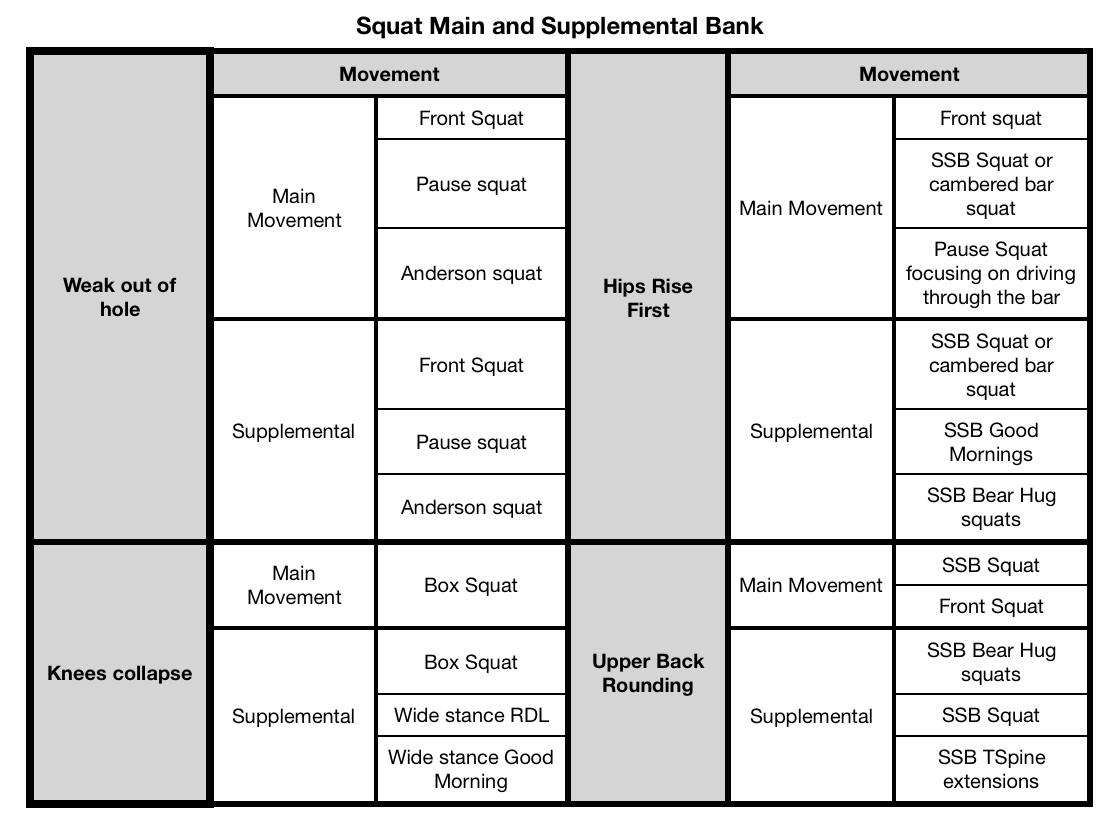
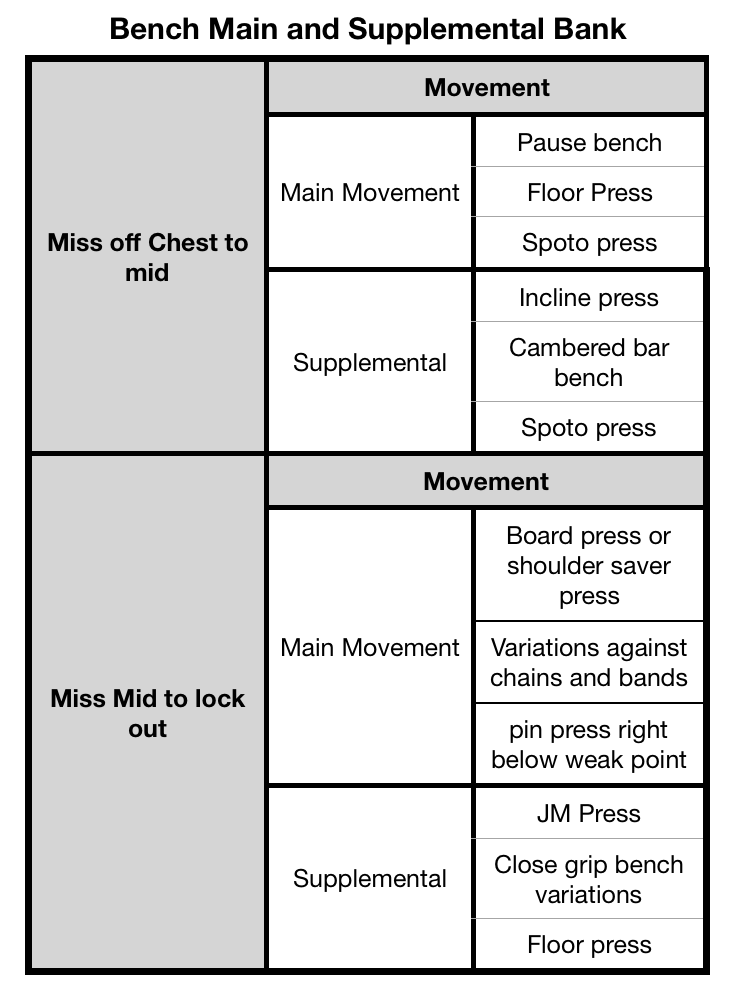
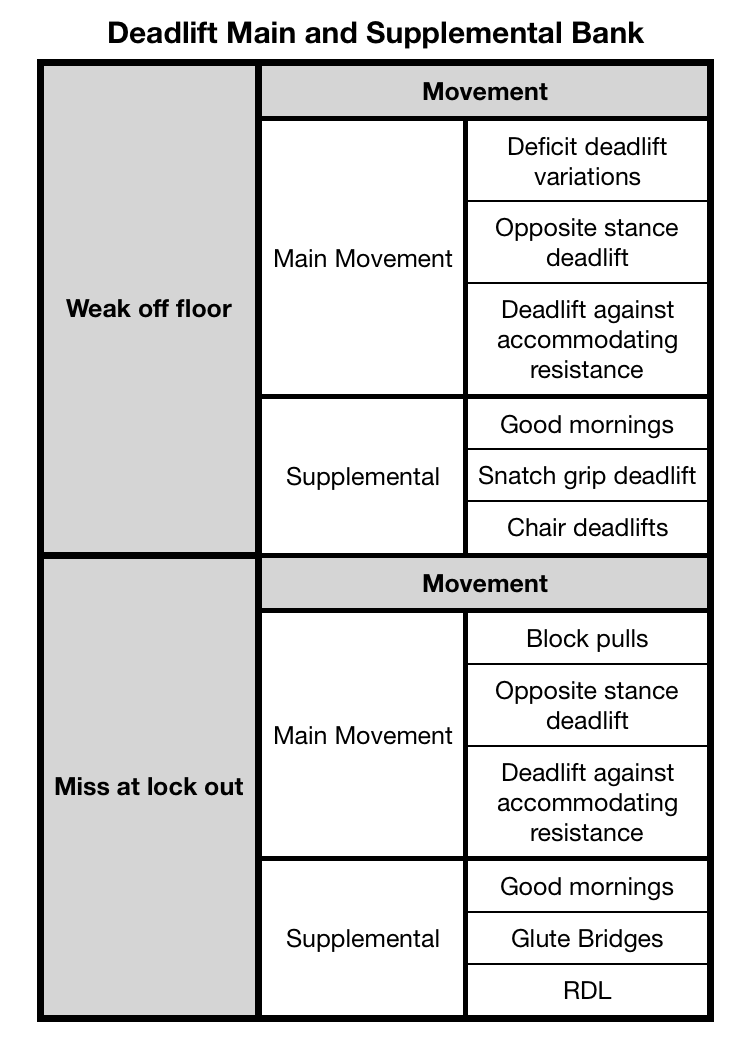
In the following example, I’ll give you a client of mine who is a beginner lifter, where they are weak at in their lifts based on video footage, and the first four weeks we did of their programming. I decided to start them in a speed strength and strength phase based on my assessments.
Closing
Finally, we made it to the end.
The conjugate sequence system is a great system for any lifter, and when utilized in an intelligent manner, it can be used with great results for the beginner and intermediate raw lifter.
Remember: It is a system you should learn. Don’t just assume or form an opinion on something you don’t truly know and understand. With the right exercises, intelligent set and rep schemes, proper planning, and sound execution, there’s no better system.
Just because someone is strong doesn’t mean they know how to coach or program for you and your individual needs and weaknesses. Be smart when seeking out a coach. While being strong and experience under the bar should be a requirement for your coach, it shouldn’t be the only ones.
If you’re a beginner or intermediate lifter, your coach can make or break your experience in this sport. They should be helping to propel you with their years of knowledge and experience, not setting you back. And by providing you with their years of knowledge, they will give you the opportunity to live, learn, and pass on.
If you have any questions, need technique analysis, or want to talk programming set-up, shoot me a message on the ‘gram @coach_bronko or send me an email at nic@thestrengthpursuit.com and let me know how I can help.
Thank you! I appreciate each and every one of you for reading this.











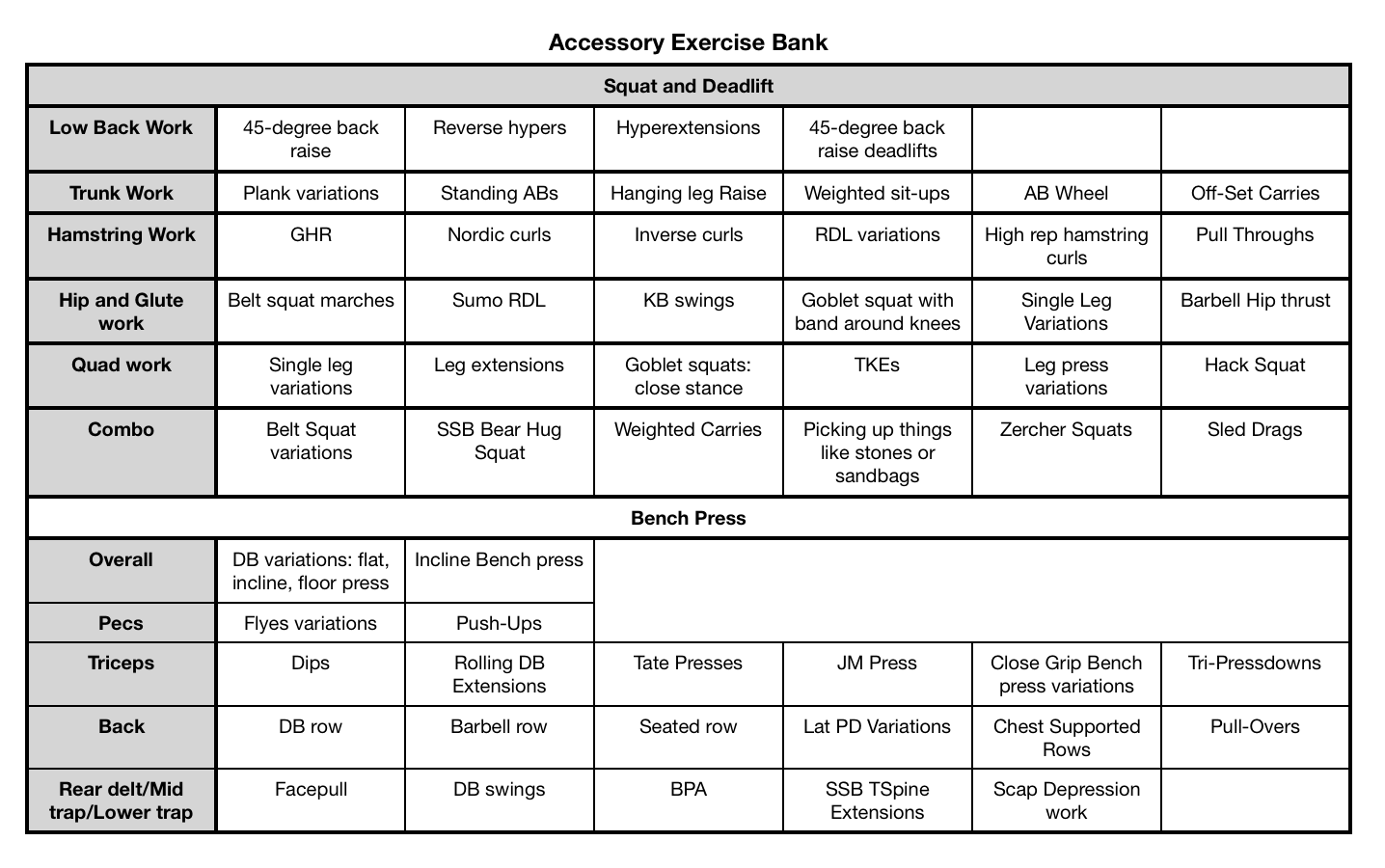
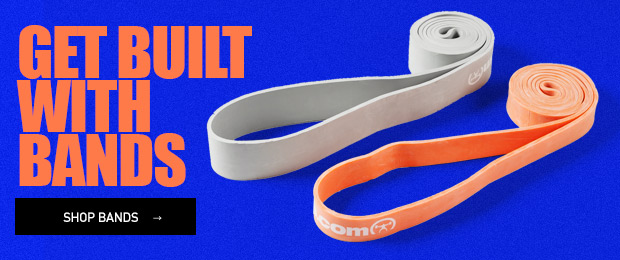
I usually base it off of perceived max. Remember on Dynamic Effort days we want the bar speed to be fast. So if it looks slow or feels slow it probably is slow. The % are just guidelines. If 60% feels slow you should drop the weight a little bit because we aren't getting the training effect we are looking for.
I'm not testing true 1RM every 3 weeks on the main movements. But I have some different thoughts and ideas on how to calculate a perceived max and progress it.
Usually, with a beginner I will go 3 weeks of straight weight then like you said back to something like 50% or even just take DE out the 4th week. Then I would keep the same 1RM and introduce something like bands. Run that for 3 weeks, another down week. Then go to chains for 3 weeks then another down week then I would probably adjust the working max after 12 weeks.
But if my client is sending me videos and the weight is moving or their ME movements are progressing nicely I'll adjust it if it needs to be adjusted.
Remember the % are just guidelines. Learning how to autoregulate is one of the best things you can do for your training.
Hope that helps.
Kind regards,
Michael